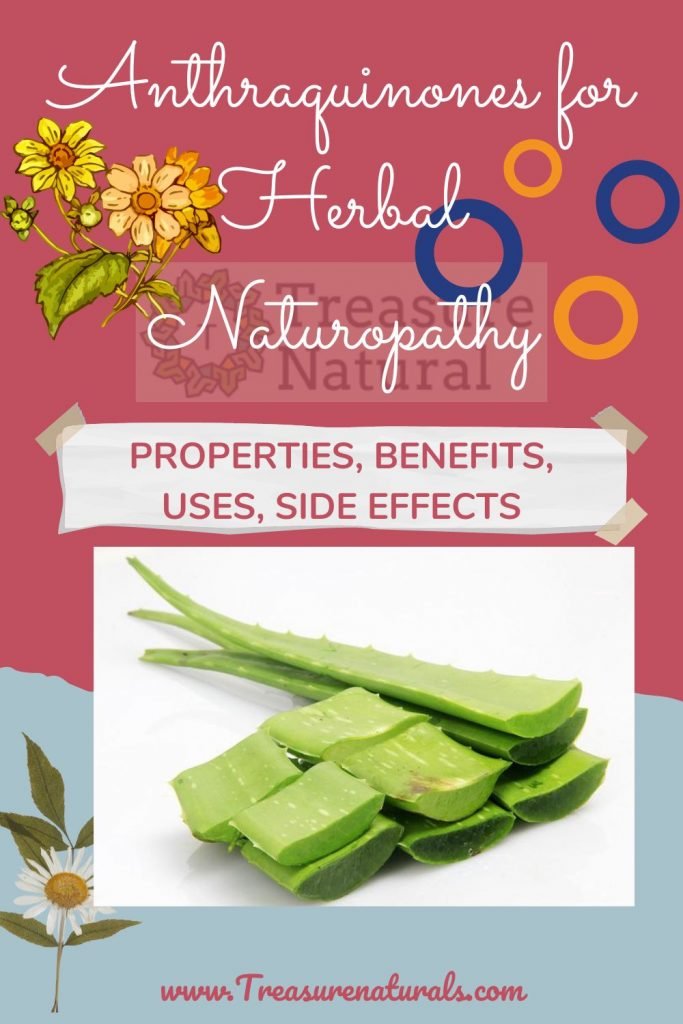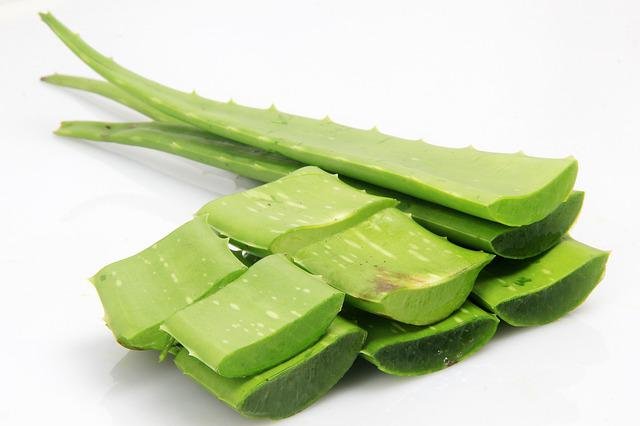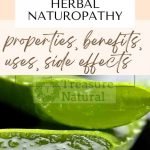
Anthraquinones are quinones derived from anthracene, a planar aromatic molecule; they are colored pigments present in different parts of the plant, where they give a yellow-brown color, sometimes masked by other pigments, as in the case of the leaves. The characteristic action of anthraquinones is a stimulus on peristalsis and therefore a laxative.
Where are anthraquinones found
There are many plants where anthraquinones are concentrated.
Aloe vera juice, bitter in taste and yellowish in color, produced by specialized cells beneath the thick epidermis, provides the anthraquinone drug of aloe. The juice is not to be confused with the mucilaginous gel present in the cells of the parenchymal tissue immediately below the epidermis (this gel is sold by various companies under the commercial name of “aloe juice”).
Aloe gel is sold as a liquid in bottles or as a freeze-dried extract in some tablets; while the juice is marketed as a yellow or dark brown powder or tablet.
The aole is a succulent plant native to Africa and then spreading all over the world. The botanical classification of the various aloe species is particularly complex and not without confusion. Currently there are more than 360 species in the Aloe genus. Aloe vera (L.) NL Burm., The most used for the pharmaceutical production of juice and gel is one of these.
Another important plant with a laxative action is the buckthorn, Frangula alnus Mill. Shrub or small tree with oblong or obovate leaves of a bright dark green color, 3-7 cm long; up to 6 m high. Native to Europe, Western Asia and North Africa.
Cassia senna L. is a herbaceous plant with a laxative action, native to the northern Nile region and then cultivated in other parts of the world. The drug, also rich in anthraquinones, is represented by the dried leaves and pods (called follicles); seeds, considered irritants, are often eliminated in the drug preparation process.
Other plants with a similar laxative action are cascara and Chinese rhubarb.
Properties of anthraquinones
Aloin, the anthraquinone present in aloe, has a distinctly bitter taste and is considered the least pleasant among the drugs with laxative action. Aloin acts by stimulating the secretion of electrolytes and water from the intestine, by increasing the internal pressure which stimulates peristalsis and therefore the transit of feces along the terminal tract of the intestine. In addition, aloin also has a detoxifying and antibiotic action.
The buckthorn drug, consisting of the dried bark and stored for 1 year, contains 3 to 7% anthraquinone glycosides. The active ingredients act on the colon by stimulating intestinal peristalsis. Furthermore, some studies highlight the antitumor action of aloe emodin against precancerous and cancerous cells of particular tumors. Aloe emodin originates from aloin by splitting a glycosidic bond which leads to the release of arabinose (a sugar) and aloe emodin; this principle has been isolated from buckthorn seeds and aloe.
Senna contains 2 to 5% diantronic glycosides (called sennosides A and B). These active ingredients seem not to be present in the fresh drug, but are formed during the drying process through the oxidation of monoanthrones present in the fresh leaves and not in the dried ones.
Senna glycosides act as prodrugs. Once administered by mouth, the anthraquinone glycoside passes unchanged in the stomach and small intestine, until it reaches the large intestine, where the sugar is removed and the bacterial flora is metabolized into rheine-anthron.
This metabolite is not absorbed and produces a stimulating action on the motility of the colon. There is an increase in the active secretion of electrolytes and water in the intestinal lumen and inhibition of reabsorption, with an increase in intestinal contents and stretching of the wall which in turn induces peristalsis.
Contraindications of anthraquinones

Excessive use of laxative plants can cause colic and inflammation.
All drugs with a laxative action are not recommended in pregnancy and breastfeeding, and in case of chronic inflammation affecting the gastrointestinal tract (Chron’s disease).
An overdose of aloin can cause abdominal pain, bloody diarrhea, hemorrhagic gastritis, and sometimes nephritis (inflammation of the kidneys).
Anthraquinones can induce, for prolonged use, an excessive loss of electrolytes (potassium), moreover, it can lead to a hypomotility of the colon up to atony. Consequently, the prolonged use of anthraquinone drugs is strongly discouraged.
Due to the presence of anthraquinones, stools can turn yellow-orange, while urine turns orange.






